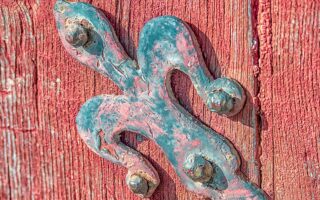The right tool for the job

If you want a French look for your French home, use the right tools
When considering what materials to use in your renovation project, take the time to find out about those that were used when your home was built and make the effort to track down similar products and materials rather than simply using readily obtainable materials and products that may be cheaper and less trouble.
Similarly, learn about the tools that were and, in most cases, still are used to perform tasks, as it’s often the tool rather than the material that determines the finish, and ‘authentic’ tools will help you to achieve an authentic look.
Just as you wouldn’t think of repairing a piece of oak furniture using chipboard and Formica, or a vintage car with plastic and stainless steel, so you shouldn’t contemplate renovating a centuries-old house with modern materials and products.
Importing
It’s tempting to pack all your gardening equipment and decorating tools, etc, when moving to France, especially from the UK. Not only can transport be expensive, however, but you might be better off raising some money from a car boot sale and buying new items when you arrive.
When deciding what to buy (or hire) in France and what to import from your home country, you should take into account not only price but also quality and composition, as some materials used in France aren’t available in other countries or are of a different type or standard. Consider also whether foreign materials and tools are suitable for use in France. For example, US power tools will require converters or transformers, which may be impractical; UK tools will need only a change of plug.
Note that it isn’t wise to use adapter plugs for power tools, as the earth may not connect properly, which can have fatal consequences.
On the other hand, check the availability of materials and tools in the area of your property and estimate how much time you might waste tracking things down, especially if your home is far from civilisation. It’s also worthwhile importing small tools that you’re familiar and comfortable with, including paint brushes.
There has been an explosion of DIY (bricolage) shops and supermarkets throughout France in recent years, and there are at least a dozen national chains as well as numerous regional groups and individual retailers offering a wide choice of tools, equipment and building supplies, including own-brand products that compete on quality and price with similar products in other countries.
Of course, buying locally requires a good knowledge of French but it’s also useful to get hold of product catalogues – in your home country if you cannot find them in France – so that you can point to a picture of what you want. You will also need to be able to understand the instructions for using materials and tools in French. Many DIY products sold in France aren’t exported to English-speaking countries and therefore won’t include instructions in English.
Other points to note about French materials, products, equipment and tools include the following:
* Good quality paint can be expensive and French interior paints are usually thinner and more difficult to apply than those found, for example, in the UK. (Note that you should never transport tins of paint that have been opened, no matter how well you think you’ve sealed them!)
* The French rarely use primer (la peinture d’impression) but merely diluted undercoat (le apprêt or la sous-couche), so if you want to use primer you may need to import it.
* Although many wood treatment products sold in France are similar to those available in the UK, British homeowners should beware of using UK-bought products in their French homes, as they may be unsuitable, particularly for southern France, where the products stocked by retailers may be slightly different from those sold in the colder, wetter north or in mountainous areas.
* Plumbing materials can be cheaper than in the UK, although prices obviously depend on the size of the outlet and the quantity purchased.
* Lining paper for walls isn’t available in France, where a fibrous mesh liner is used, which creates a textured surface. If you want a flat surface to paint or paper, you must either import lining paper or use plaster or plasterboard.
* Roofing felt is rarely used in France, although there are products such as Airflex, that will serve as well.
* French cement mixers (une bétonnière) tend to be light in construction with tiny motors, but they work.
* Spades, shovels, pickaxes and similar implements have straight handles – ie: without a cross-piece at the end – so bring your own if you prefer working with that type, but bring a spare handle as well, as French handles (une manche) have different sections.
* You will find odd-shaped hammers (un marteau), saws (une scie) and clamps (une chevillette, une pince, des pinces, un serre-joint, etc.) that are used by builders in France but nowhere else.
* French scaffolding tends to come in modular units, often on wheels (un roulant), which can be hired from builders’ merchants and are simple to erect, sturdy and safe.
* Electric showers aren’t generally used in France, so if you want one at any stage in your renovation you should consider importing one; an electrician will fit it for you.
* If you want to be look the part during your renovation work, you can wear blue overalls (une combinaison or more usually des bleus, they’re invariably blue!), which cost around E25.
From Renovating and Maintaining your French Home by Joe Laredo, Survival Books
Share to: Facebook Twitter LinkedIn Email
More in courses, decoration, learning, Removals, renovation, shops, work
By FrenchEntrée
Leave a reply
Your email address will not be published. Required fields are marked *



